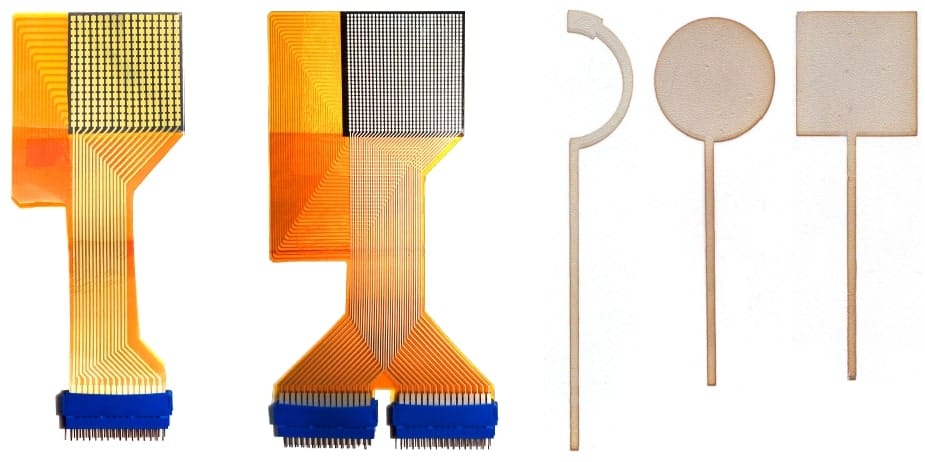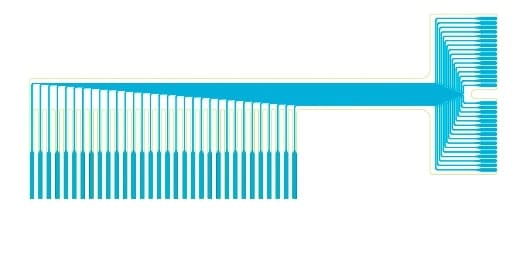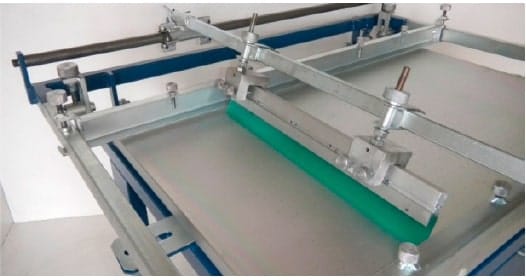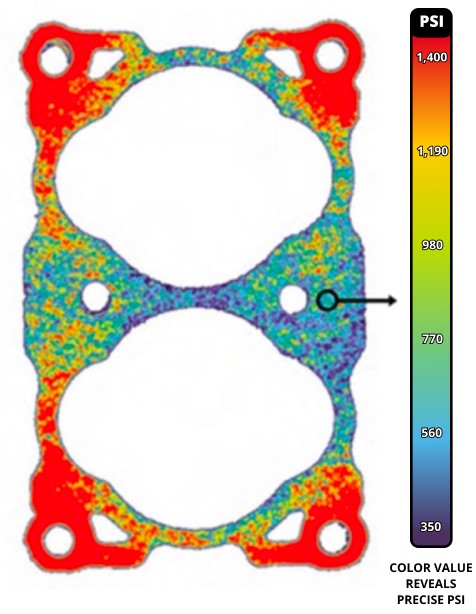
Our best solution for prototype or low volume custom applications

Tactile Surface Pressure Analysis
The Innovation
Exciting advances in conductive ink printing have enabled us to build customized sensors with extremely low startup and tooling costs and rapid turnaround in just days. The core of the C-series sensor is formulated with the world’s first Nano-polymer based tactile surface sensor.
What It Does
Tactilus® allow the user to capture and record pressure conditions occurring in between any two contacting or impacting surfaces in real time. The paper-thin Tactilus® sensor is actually placed at the contact interface where it records and assimilates both pressure distribution and pressure magnitude on your Windows® based computer.
Common Applications
- Packaging: nip impression, heat sealing
- Automotive: brake pad, clamping, clutch, fuel cell, gasket/bolted joint, impact study, lamination
- Electronics: heat sink, BGA, connector, lamination, LCD bonding, wafer bonding/polishing
- Aerospace: composite layup, fuel cell, lamination
- Ergonomics: biomechanics, body mapping
The C series represents a highly economical solution to users requiring low-volume or prototype samples.The C series is rapidly manufacted, and custom sensors could be delivered to you in days, not weeks. It’s a simple 3 step process:



Product Benefits
- Very low setup cost
- Ideal for small quantity runs
- Least expensive solution for custom sensors
Tactilus® Technology
Tactilus® is a matrix-based tactile surface sensor – essentially an “electronic skin” that records and interprets pressure distribution and magnitude between any two contacting or mating surfaces and assimilates the collected data into a powerful Windows® based tool kit. Each Tactilus® sensor is carefully assembled to exacting tolerances and individually calibrated and serialized.
The architectural philosophy of Tactilus® is modular, allowing for portability, easy scalability, and simultaneous data collection from up to four discrete sensor pads Tactilus® employs sophisticated mathematical algorithms that intelligently separate signal from noise, and advanced electronic shielding techniques maximize the sensor’s immunity to noise, temperature and humidity.
| Specifications | |
| Active Technology | Nano-tubes Composite |
| Surface Pressure Range | *0 – 150 PSI (0 – 10.5 kg/cm2) |
| Matrix Size | Up to 32 x 32 lines |
| Sensing Points | Up to 3,465 total |
| Sensing Area Size | Up to 14 x 14 in. (35.6 x 35.6 cm) |
| Scan Speed | Up to 800 FPS |
| Temperature Capability | Up to 200° F (93° C) |
| Spatial Resolution | From 0.06 in. (1.6 mm) |
| Thickness | 16 mils (0.4 mm) |
| Accuracy | ± 10% |
| Repeatability | ± 2% |
| Hysteresis | ± 5% |
| Non-linearity | ± 1.5% |
*Sensors larger than 8 x 8 in. have max pressure capabilities that are lower.



